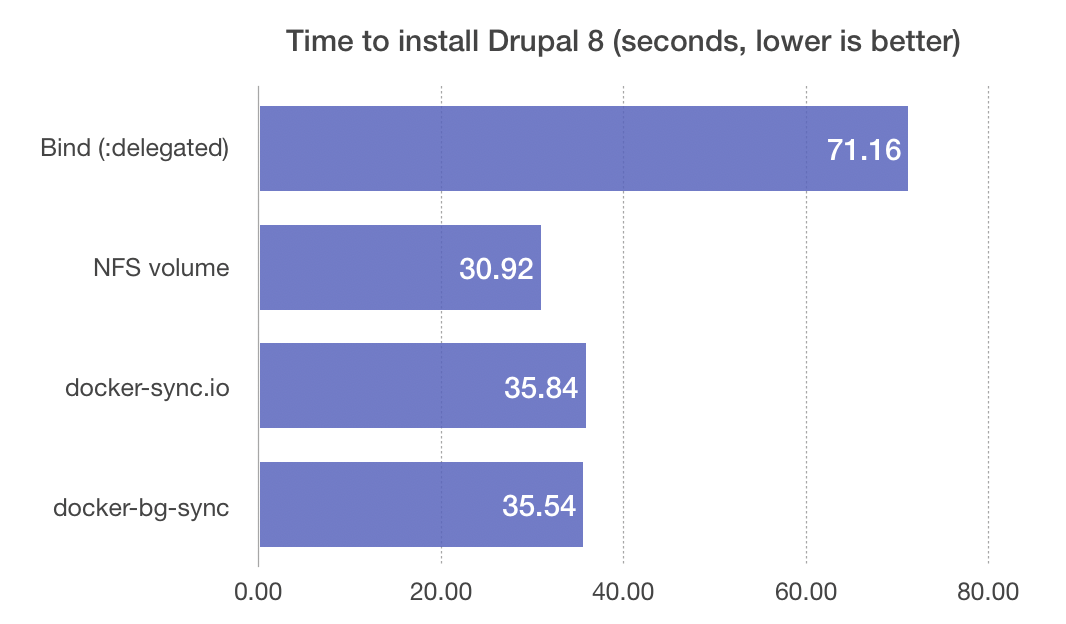
- #DOCKER MACHINE DOCKER FOR MAC FOR MAC#
- #DOCKER MACHINE DOCKER FOR MAC MANUAL#
- #DOCKER MACHINE DOCKER FOR MAC FULL#
#DOCKER MACHINE DOCKER FOR MAC MANUAL#
In most cases, you should use one of the recommended methods that don't require manual configuration. Use this method only for special cases and custom configurations. TCP socket: This method should work for any Docker version and operating system. If the Connection successful message doesn't appear, check your Docker Machine executable setting on the Docker | Tools page. If you get permission denied errors, add the current user to the docker group on the machine, log out, and then log back in.ĭocker Machine: If you are using Docker Toolbox for Windows or macOS, this is the recommended option for connecting to the Docker API. Unix socket: This is the recommended connection option for Linux. Otherwise, enable connection to Docker via the TCP protocol: Right-click the Docker icon on the Notification bar, select Settings from the context menu, and then select the Expose daemon on tcp://localhost:2375 without TLS checkbox in the General section of your system Docker settings.ĭocker for Mac: The recommended option when using Docker Desktop for Mac. These settings will only apply to your current command prompt session.Select the method for connecting to the Docker API.ĭocker for Windows: The recommended option when using Docker Desktop for Windows.
#DOCKER MACHINE DOCKER FOR MAC FOR MAC#
Docker for Mac provides docker and docker-compose. We will highlight the path to a peaceful coexistence. It is new with some limitations and potential conflicts with DevTools. Commands you enter using your local Docker client will be executed by the remote Docker engine. Docker for Mac is a native hypervisor implementation of Docker that does not rely on a virtual machine provided by Docker Machine. REM /f "tokens=*" %i IN ('docker-machine env remote-docker-host') DO simply copy and execute the last line and your Docker client will be configured to use the remote Docker engine: /f "tokens=*" %i IN ('docker-machine env remote-docker-host') DO it. REM Run this command to configure your shell: SET DOCKER_MACHINE_NAME=remote-docker-host SET DOCKER_CERT_PATH=C:\Users\kevin\.docker\machine\machines\remote-docker-host SSH to the remote machine and edit the sudoers file: sudo nano /etc/sudoersĪnd add the following to the end of the file where įor example on my machine: docker-machine env remote-docker-host You may want to only enable this while we configure Docker Machine.

In summary, if you don't already have an SSH key, you'll need to generate one: ssh-keygen -t rsaĪnd then copy it to the remote machine: ssh-copy-id Docker Machine will be sending commands over SSH on our behalf, so you'll need to be able to enter sudo mode without entering your password. As noted in the output of the docker-machine create command, run the following command to tell the Docker ‘which machine’ to execute docker command to.

I've written up detailed instructions here.

This also works for Docker for Windows for getting in Moby Linux VM (doesn't work for Windows Containers).
#DOCKER MACHINE DOCKER FOR MAC FULL#
We'll need to be able to SSH into the remote host. Just run this from your Mac terminal and it'll drop you in a container with full permissions on the Docker VM. But what if you need to connect to an existing Docker host? That's what I'll cover in this post. I recently wrote about using Docker Machine to create a new Docker host on Azure. It's often useful to connect to a remote Docker host to run commands such as checking the status of containers and viewing logs etc. Menu Connect your Docker client to a remote Docker host 28 November 2016 on docker 0 Comments


 0 kommentar(er)
0 kommentar(er)
